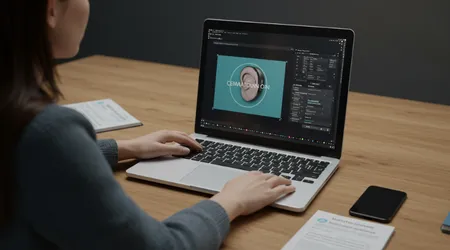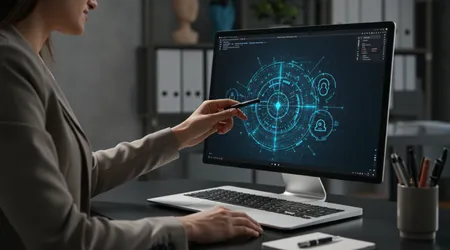How Blockchain Could Help with Assistive Device Distribution

Blockchain could help with assistive device distribution by revolutionizing transparency, efficiency, and trust in delivering life-changing tools to those who need them most.
Imagine a world where individuals with disabilities receive assistive devices wheelchairs, hearing aids, or prosthetic limbs swiftly, securely, and without bureaucratic hurdles.
The promise of blockchain technology lies in its ability to create decentralized, tamper-proof systems that ensure accountability at every step.
In 2025, as assistive technology advances, integrating blockchain into distribution networks addresses longstanding challenges like fraud, delays, and inequities.
This article explores how blockchain redefines the assistive device ecosystem, offering practical solutions and real-world potential to empower millions globally.
The global assistive technology market is booming, projected to reach $31.8 billion by 2026, driven by aging populations and rising disability awareness (Allied Market Research, 2020).
Yet, distribution remains a bottleneck devices often fail to reach those in need due to opaque supply chains and mismanagement.
Blockchain’s decentralized ledger offers a transparent, secure framework to track devices from manufacturer to user, ensuring no step is lost in the process.
By leveraging smart contracts and immutable records, blockchain tackles inefficiencies head-on. Why should vulnerable communities wait months for critical tools when technology can deliver solutions now?
Let’s dive into how this transformative approach reshapes assistive device distribution.
Enhancing Transparency in Supply Chains
Blockchain’s core strength is transparency, a game-changer for assistive device distribution. Blockchain could help with assistive device distribution by creating a public ledger where every transaction manufacturing, shipping, delivery is recorded.
Stakeholders, from manufacturers to NGOs, can verify each step in real time. This openness reduces fraud, like counterfeit devices entering the market, which plagues underserved regions.
For example, a wheelchair produced in Germany can be tracked to a rural clinic in Kenya, ensuring authenticity.
Opaque supply chains often lead to misallocated resources. Blockchain’s immutable records ensure devices reach intended recipients, not black markets.
++ How OpenAI and Similar Tools Are Shaping Assistive Communication
A 2023 study by the World Health Organization noted that 10% of assistive devices in low-income countries are counterfeit or substandard.
Blockchain’s traceability mitigates this, protecting users. Imagine a prosthetic limb’s journey logged on a blockchain each component verified, giving users confidence in quality.
Moreover, blockchain fosters trust among donors and organizations. When funding assistive devices, donors can see exactly where their money goes.
This transparency encourages more investment, amplifying impact. By replacing murky processes with a clear, auditable trail, blockchain ensures accountability. It’s like a glass pipeline everyone sees the flow, and nothing gets lost.

Streamlining Distribution with Smart Contracts
Efficiency in distribution is critical for assistive technology. Blockchain could help with assistive device distribution through smart contracts self-executing agreements coded on the blockchain.
These automate tasks like verifying inventory or releasing funds, cutting bureaucratic delays. For instance, a smart contract could automatically release payment to a supplier once a hearing aid reaches a certified distributor.
Manual processes often slow down delivery. Smart contracts eliminate middlemen, reducing costs and errors.
In a pilot project by IBM in 2024, blockchain-based smart contracts cut supply chain delays by 30% for medical equipment. Applied to assistive devices, this could mean faster delivery to remote areas, where delays are common.
Also read: How Smart Home Devices Improve Independence for People with Disabilities
Consider a rural hospital awaiting braille displays. A smart contract ensures the supplier ships only after quality checks, streamlining the process.
This automation saves time and resources, letting organizations focus on user support. By replacing paperwork with code, blockchain makes distribution swift and reliable, transforming lives efficiently.
Ensuring Equitable Access for Underserved Communities
Access to assistive devices is often unequal, especially in low-income regions. Blockchain could help with assistive device distribution by prioritizing equitable allocation through decentralized systems.
Blockchain platforms can track demand and supply, ensuring devices go where they’re needed most. This prevents urban bias, where cities hoard resources.
In 2025, blockchain-based platforms like those developed by ConsenSys enable NGOs to map real-time needs.
For example, a visually impaired student in a remote village could be prioritized for a braille reader based on logged data. This data-driven approach ensures fairness, unlike traditional systems prone to favoritism.
Read more: Assistive Technology for Cognitive Disabilities: Top Trends
Blockchain also empowers local communities. Decentralized networks allow regional organizations to input needs directly, bypassing centralized bottlenecks.
Picture a community health worker logging a request for wheelchairs on a blockchain platform funds and devices flow directly, ensuring no one is left behind. Equity becomes not just a goal but a reality.
Combating Fraud and Enhancing Security
Fraud is a persistent threat in assistive device distribution. Blockchain could help with assistive device distribution by securing transactions with cryptographic protection.
Each device’s journey is logged immutably, making it nearly impossible to divert or counterfeit products. This security is vital for protecting vulnerable users.
Counterfeit devices, like substandard hearing aids, harm users and erode trust. Blockchain’s tamper-proof nature ensures only verified devices reach recipients.
For example, a prosthetic limb’s serial number can be recorded on the blockchain, traceable from factory to user, preventing fraud.
Additionally, blockchain secures funding streams. Donors can track contributions, ensuring funds aren’t misused. In a 2024 UNICEF pilot, blockchain reduced fund mismanagement by 25% in aid programs.
Applied to assistive devices, this builds donor confidence, increasing resources for distribution. It’s like locking a safe only the right key opens it, safeguarding the entire process.
Empowering Users with Data Ownership
Blockchain shifts power to users by giving them control over their data. Blockchain could help with assistive device distribution by enabling individuals to manage their own needs records.
Through decentralized identity systems, users can securely share preferences with suppliers, ensuring tailored solutions.
For instance, a person with mobility issues could log specific wheelchair requirements on a blockchain platform. Suppliers access this data directly, delivering customized devices.
This eliminates miscommunication and empowers users to advocate for themselves, enhancing dignity.
Data privacy is critical. Blockchain’s encryption ensures sensitive health information stays secure, unlike traditional databases prone to breaches.
In 2025, platforms like uPort allow users to control who accesses their data, fostering trust. This user-centric approach transforms distribution into a collaborative, respectful process, putting individuals first.
Fostering Collaboration Across Stakeholders

Collaboration is key to effective distribution, and blockchain excels at uniting diverse players. Blockchain could help with assistive device distribution by creating a shared platform where manufacturers, NGOs, and governments align efforts.
This interconnected system reduces duplication and maximizes impact.
For example, a blockchain network could link a prosthetic manufacturer in the U.S. with a Brazilian NGO, ensuring seamless coordination. Each party accesses real-time data, streamlining logistics.
In 2024, the Ethereum Foundation supported a blockchain platform that improved coordination in global health supply chains by 20%.
This collaborative model also encourages innovation. Stakeholders can share insights on device needs, driving research into better technologies.
Picture a global network where a Kenyan clinic’s feedback informs a Japanese manufacturer’s design blockchain makes this possible. It’s like an orchestra, with each player harmonizing for a common goal.
Table: Key Benefits of Blockchain in Assistive Device Distribution
| Aspect | Traditional System | Blockchain Solution |
|---|---|---|
| Transparency | Opaque, prone to mismanagement | Public ledger, auditable in real time |
| Efficiency | Slow, bureaucratic processes | Smart contracts automate tasks |
| Security | Vulnerable to fraud and counterfeits | Cryptographic protection, tamper-proof |
| Equity | Urban bias, unequal access | Data-driven allocation to underserved areas |
| User Empowerment | Limited control over personal data | Decentralized identity, user-controlled |
Overcoming Challenges and Looking Ahead
Blockchain isn’t a magic bullet it faces hurdles like scalability and cost. In 2025, processing large-scale transactions remains slow, a challenge for high-volume distribution.
However, advancements in layer-2 solutions, like Polygon, are reducing costs and speeding up networks, making blockchain more viable.
Adoption requires education. Stakeholders must understand blockchain’s benefits to embrace it fully.
Training programs, like those by Hyperledger in 2024, are bridging this gap, equipping organizations with tools to implement blockchain effectively. Resistance to change is natural, but progress demands adaptation.
Looking forward, blockchain’s potential is vast. Pilot projects in 2025, such as those by the UN, are testing blockchain for assistive device distribution in refugee camps.
Success here could scale globally, transforming access. The future isn’t just digital it’s decentralized, transparent, and inclusive.
The road ahead involves collaboration. Governments must support blockchain-friendly policies, while tech developers refine scalable solutions.
Imagine a world where every assistive device reaches its user without delay or fraud blockchain can make this real. The question is: will we seize this opportunity to reshape lives?
Conclusion: A New Era for Assistive Technology
Blockchain could help with assistive device distribution by forging a path to a more transparent, efficient, and equitable system.
It’s not just about technology it’s about dignity, access, and empowerment for millions. From securing supply chains to empowering users, blockchain addresses systemic flaws with precision.
The $31.8 billion assistive technology market demands innovation, and blockchain delivers by ensuring devices reach those who need them most.
Think of blockchain as a bridge, connecting manufacturers, NGOs, and users in a seamless flow of trust. As we move deeper into 2025, pilot projects and scalable solutions are paving the way for widespread adoption.
The challenges cost, scalability, education are real but surmountable. By embracing blockchain, we can transform assistive device distribution into a model of efficiency and fairness.
The question isn’t whether blockchain can help it’s how quickly we can make it happen. Let’s build a future where no one waits for the tools they need to thrive.
Frequently Asked Questions
1. How does blockchain ensure assistive devices aren’t counterfeit?
Blockchain’s immutable ledger tracks each device’s journey, verifying authenticity from manufacturer to user, reducing the risk of counterfeit products.
2. Can blockchain make assistive devices more affordable?
By cutting intermediaries and fraud, blockchain lowers distribution costs, potentially reducing prices, though scalability challenges remain.
3. Is blockchain secure for storing user data?
Yes, blockchain’s cryptographic protection ensures user data, like health records, remains secure and controlled by individuals, not third parties.
4. What are the main challenges of using blockchain for assistive devices?
Scalability, high processing costs, and stakeholder education are hurdles, but advancements like layer-2 solutions are addressing these issues.
5. How can NGOs benefit from blockchain in distribution?
NGOs gain transparency, streamlined logistics, and donor trust, ensuring funds and devices reach intended recipients efficiently and equitably.
